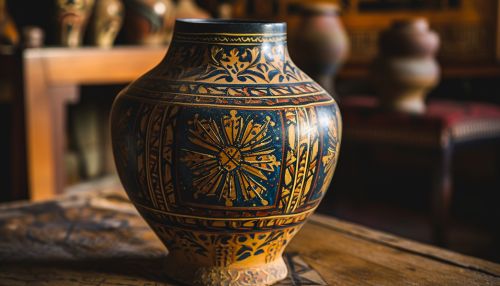Ceramic materials
Introduction
Ceramic materials are inorganic, non-metallic materials made from compounds of a metal and a non-metal. They are formed by the action of heat and subsequent cooling. Ceramic materials can be crystalline or partly crystalline. They are often hard and strong in compression, but weak in shearing and tension. They withstand chemical erosion that occurs in other materials subjected to acidic or caustic environments. Notable examples include bricks, porcelain, ceramics and glass.
History
The earliest ceramics made by humans were pottery objects, including vessels, made from clay, either by itself or mixed with other materials like silica, hardened, sintered, in fire. Later ceramics were glazed and fired to create smooth, colored surfaces, decreasing porosity through the use of glassy, amorphous ceramic coatings on top of the crystalline ceramic substrates.


Types of Ceramic Materials
Ceramic materials are generally divided into two broad types: traditional ceramics and advanced ceramics.
Traditional Ceramics
Traditional ceramics include clay products, silicate glass, and cement. The earliest ceramics were pottery objects made from clay, either by itself or mixed with other materials.
Advanced Ceramics
Advanced ceramics, also known as technical ceramics, include a wide range of materials such as alumina, zirconia, silicon carbide, silicon nitride, titania, and many others. They exhibit specialized properties that make them desirable for specific applications. For example, silicon nitride and silicon carbide are used in engine parts due to their heat resistance and low thermal expansion.
Properties of Ceramic Materials
Ceramic materials can be identified by their general properties like high hardness, brittleness, chemical stability and low thermal conductivity. These material properties are utilized to produce number of commercial and domestic products such as pottery, bricks, advanced functional items, etc.
Mechanical Properties
Ceramics tend to be strong, but brittle, meaning they can bear heavy loads, but they shatter when subjected to tension or bending. The brittleness is generally attributed to the type of atomic bonding in these materials – ionic and covalent bonds.
Thermal Properties
Ceramics typically have low thermal conductivities, which makes them good insulators. However, certain ceramics, like silicon carbide and aluminium nitride, have high thermal conductivity, and are therefore used in applications where heat dissipation is important.
Electrical Properties
Most ceramics are insulators. However, certain ceramics exhibit semiconducting, superconducting, or even piezoelectric properties. Piezoelectric ceramics, for example, generate an electrical charge when mechanically deformed.
Applications of Ceramic Materials
Ceramic materials are used in a wide range of applications. Due to their unique properties, they have found use in fields as diverse as electronics, automotive, medical, and space exploration.
Electronics
In the electronics industry, ceramics are used as insulators, capacitors, and resistors. The piezoelectric properties of certain ceramics are used in microphones, speakers, and other transducers.
Automotive
Ceramic materials are used in a variety of automotive applications. For example, ceramic brake discs are used in some high-performance cars and heavy vehicles due to their superior thermal and wear resistance.
Medical
In the medical field, ceramics are used for dental implants and bone replacements. They are also used in biomedical implants such as hip and knee replacements.
Space Exploration
Ceramic materials are used in a variety of applications in space exploration. For example, they are used in the heat shields of spacecraft reentering the Earth's atmosphere, due to their ability to withstand extreme temperatures.
